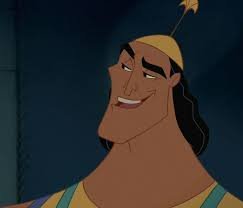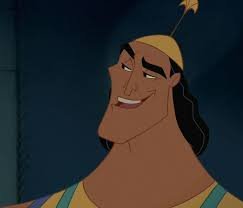Characters with big chins have been a mainstay in a variety of media, including literature, comic books, animation, and films. These characters are easily recognizable because of their unique facial features, which might represent humor, strength, or even determination. This article investigates the various facets of huge chin characters, looking at their characteristics, functions, and influence on popular culture.
Big Chin Animation Characters
Characters with prominent chins sometimes make for memorable heroes or antagonists in animation. Famous examples are The Crimson Chin from “The Fairly OddParents,” who represents superhero bravery and strength, and Johnny Bravo, whose oversized chin matches his extravagant attitude. These characters make use of their characteristic chins to heighten their visual attractiveness and accentuate their heroic or humorous qualities.

Comic Book Characters with Big Chins
Big-chin characters that create a lasting impression on readers are abundant in comics. The Tick is a satire of classic superheroes, combining strength and humor in his enormous chin. The powerful antagonist from Marvel Comics, Thanos, also has a large chin that highlights his strength and menacing appearance. These characters demonstrate how a distinctive facial feature can serve as a key plot point in comic book narratives.
Big-Chin Movie Characters
Several noteworthy huge chin characters have appeared in movies. In the “Evil Dead” television series, Bruce Campbell’s portrayal of Ash Williams renowned for his rugged chin, which contributes to his tough and tenacious attitude. Similar to this, Buzz Lightyear from “Toy Story” has a prominent chin that draws attention to his valiant and daring nature. These characters serve as examples of how a character’s physical attributes can improve their appeal and role in movies.
Well-known Big Chin Figures
Well-known big-chin characters appear in a variety of media. Among the most well-known are:
- Jay Leno: Long-time host of “The Tonight Show,” noted for his prominent chin.
- Stan Smith from “American Dad!”: His big chin goes well with his disproportionately strong sense of patriotism.
- Shaggy Rogers from “Scooby-Doo”: His chin contributes to his unusually gaunt look.
In their various media, these characters make the most of their significant chins to accentuate their distinct personalities and roles.
Famous Big Chin Figures
Why is a character with a large chin so iconic? It often involves a combination of visual design, personality traits, and cultural impact. Characters like Popeye and Quagmire from “Family Guy” are examples of legendary huge chin characters whose facial traits are crucial to their identity and charm. Their chins frequently indicate their power, quirkiness, or comedy worth.
Character Design for Big Chin
Big chins highlighted by character design, which is very important. To make the chin stand out, artists employ a variety of strategies, including contrasting facial features and exaggerated proportions. For example, Gaston from “Beauty and the Beast” has a pronounced chin that emphasizes his macho and egotistical nature. These design choices help in visually communicating character traits to the audience.
Characteristics of Big Chin
Characters with big chins frequently have attributes in common, such boldness, confidence, and occasionally arrogance. Characters with larger-than-life personas, such as Johnny Bravo and The Crimson Chin, are examples of this. According to a psychological analysis, these characteristics might emphasized to better fit the visual prominence of their chins, which would result in a more unified and memorable character profile.
Pop Culture Characters with Big Chins
Big chin characters have a profound impact on popular culture that goes beyond their specific genre. Characters like Buzz Lightyear and Thanos have become symbols of popular culture, with their likenesses showing up in fan art, memorabilia, and memes. This broad acknowledgment highlights the importance and allure of big chin figures in culture.
Big Chin Symbols and Meanings
In character design, big chins can have a variety of metaphorical meanings. A big chin frequently associated with strength and tenacity, as seen in heroic figures. On the other hand, a large chin can heighten the humor in comedic characters by emphasizing their facial features. This symbolism’s duality makes it possible to depict characters in a variety of complex ways.
Remarkable Big Chin Personas
Some huge chin characters stand out in particular because of their unique roles and traits. For example, Quagmire’s quirky and humorous nature is embodied in his chin. In a same vein, Gaston’s chin helps him come across as the archetypal conceited enemy. Examining these people exposes the qualities that make them memorable to the viewer.
TV Characters with Big Chins
Many of the big-chin characters that we have grown to love from television. Characters with large chins, such as Stan Smith and Jay Leno, have enhanced their on-screen characters and left a lasting impression. Their TV program roles demonstrate how physical attributes may have a big impact on character development and viewer interest.
Literary Characters with Big Chins
Characters with large chins in literature might not be as visually striking, but their descriptions can have a profound effect. Novelists utilize in-depth depictions to highlight a character’s physical characteristics, like a prominent chin, in order to portray their personality and history. For instance, a character with a prominent chin may portrayed as fierce and determined in vintage detective novels.
Development of the Big Chin Personas
Over time, the way big chin characters portrayed has changed to suit shifts in both creative and cultural norms. While more complex and varied qualities may included in modern portrayals, early ones frequently placed an emphasis on power and bravery. This progression demonstrates how versatile and timeless big chin characters are in a variety of historical contexts.
Influence of Big Chin Characters on Psychology
Big chin characters can have a profound psychological effect on viewers. Research indicates that unique face characteristics might enhance a character’s memorability and relatability. Audiences’ perception and connection to a persona may influenced by the association of a prominent chin with attributes such as assertiveness and confidence.
Importance of Big Chin Characters in Culture
Cultural conceptions of characters with prominent chins might differ greatly. A large chin can binterpreted as a sign of power and wisdom in some cultures, and humorous or exaggerated in others. Comprehending these cultural subtleties enriches the examination of big chin characters and their respective roles.
Conclusion
Characters with big chins are essential in a variety of mediums, including literature, films, comic books, and animation. Their unique quality strengthens their cultural relevance and personality features, in addition to making them physically memorable. Big chin characters will surely continue to be a beloved and significant component of narrative as we witness the evolution of character design.

